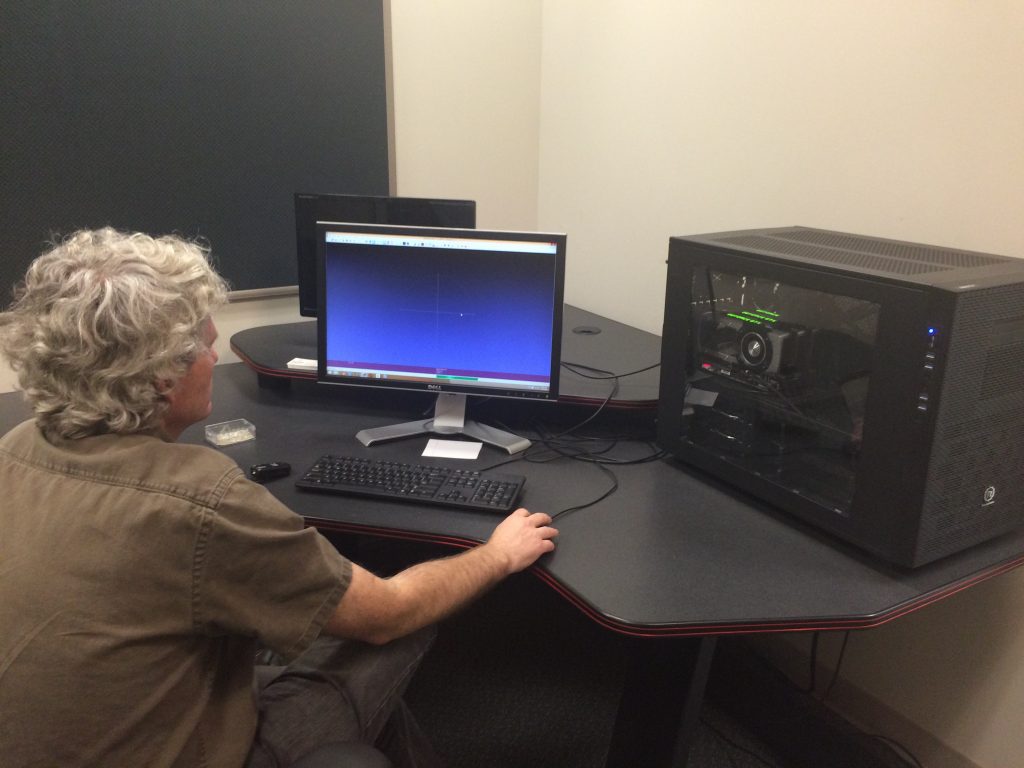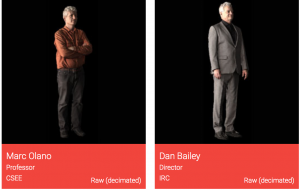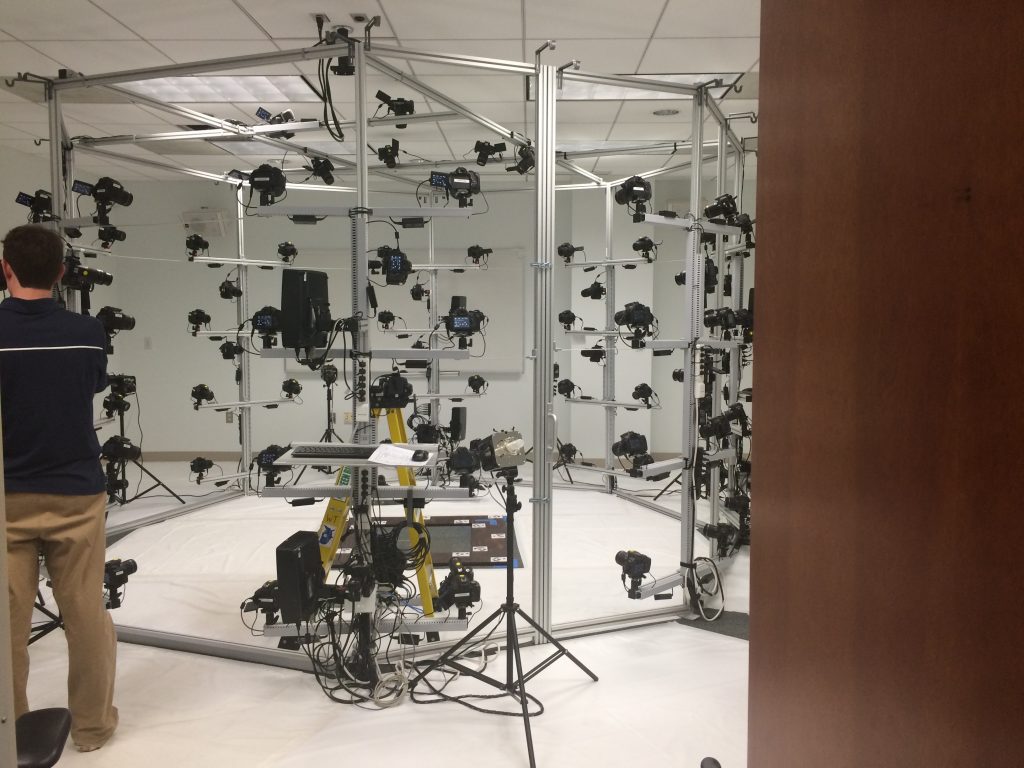Nestled in the back of room 109 of the Information Technology and Engineering building, Dan Bailey, head of the Image Researching Center (IRC) is being captured. He sits in the center of the room, in a open metal rig with cameras that are surrounding him. IRC staff walk around him, fine tuning each of the camera settings as they make their final preparations.
The lights turn off, and within a second a bright flash illuminates the room. The lights turn back on, and a staff member exclaims “got it” as another successful 3D capture has been performed at the IRC. In the next few hours a powerful computer will start to build a 3D scan of Dan Bailey.
“Being able to capture a 3D model is just a priceless ability,”
Outside of the room sits Dr. Marc Olano, a professor of Computer Science & Electrical Engineering, who helps run the studio. Olano and Bailey worked with Direct Dimensions Inc, a company based in Owings Mills, Maryland, and funded the space through a $180,000 grant from the National Science Foundation.
Olano told Stephen Babcock, a reporter at Technical.ly Baltimore that “Being able to capture a 3D model is just a priceless ability,” and “That flash is the first step.”

The system is smart enough to ignore all the cameras around the person or object and instead finds unique points of features to focus on. In addition, there are projectors that help capture something that doesn’t have enough detail to focus on by projecting more detail onto a person or object so the person can find it.
Between captures, there are a couple of tools that are used to help calibrate the space. One tool is a pole that is used to help position the cameras using tape on the pole that gives reference points for the center and edge of the frame for the cameras.
For capturing, there is a calibration dummy made out of cardboard construction tubes with a lot of different clothing patterns. This is essential in making it easier to build a 3D model of the dummy, as the reconstruction process can find the shape of the object and camera positions simultaneously, but if the part of the object or person you are scanning is too featureless, it can have trouble solving for both of those at once
After the image is captured, the computer starts building a 3D model out of 90 images. Zooming in on the image, you can actually see each individual polygon that makes up the image.

“This [studio] serves as not only the intersection of art and computer science, but other disciplines as well.”
Olano believes that this 3D capture studio can go beyond computer science. “This [studio] serves as not only the intersection of art and computer science, but other disciplines as well.” When scanning in a person, it is possible to make that person into an animation model for use in video games.
Museums could ask to scan in historical objects so that one could rotate and inspect the object at any angle they want. People who have had amputations could get scanned and have something custom built for them. The possibilities for this space are immense and will continue to grow over time.
The 3D capture studio is still limited to only a few projects at a time but Olano hopes to open it up to more departments soon. You can view some of the scans the studio has done online here.
